THE TREASURE OF THE SIERRA MADRE (1948)
In 1920s Mexico, three men set out to find gold in the mountains.
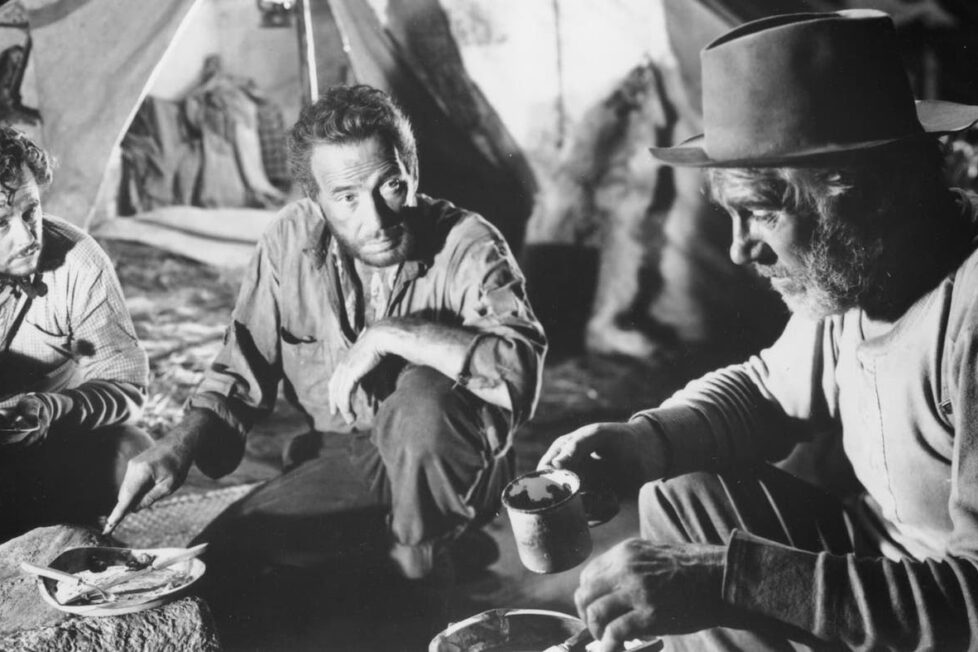
In 1920s Mexico, three men set out to find gold in the mountains.


What is the treasure the men of The Treasure of the Sierra Madre seek? For three-quarters of a century, countless thousands have doubtless assumed it’s the gold waiting in the Mexican mountains, which becomes almost as important a character as Dobbs (Humphrey Bogart), Howard (Walter Huston), and Curtin (Tim Colt). Certainly gold itself is more of a prime mover in the narrative than their nemesis, Gold Hat (Alfonso Bedoya), or any of the other Mexican locals and American fortune-seekers they encounter.
There is both immense tension and real magic in the scene where the trio are finally able to start weighing the gold they’ve extracted from the ground, after all, as if the point of the film has arrived.
But both John Huston’s movie and the 1927 novel by B. Traven, published two decades previously and finally reaching the screen after earlier attempts came to nought, also make it clear that there is another kind of treasure involved. Traven hints at it strongly—“the treasure which you think not worth taking trouble and pains to find, this one alone is the real treasure you are longing for all your life”—and Huston’s screenplay makes it even more explicit, in quoting a letter written by the wife of Cody (Bruce Bennett) from back home in the States: he may be in search of riches in Mexico, but she urges him to “remember we’ve already found life’s real treasure”.
This real treasure is the contentment of the kind Howard will eventually find with the Mexican villagers who adopt him, and that Curtin hopes to attain by investing his share of the gold mine’s wealth in a fruit orchard. The modesty of their aspirations contrasts conspicuously with those of Dobbs, who’s both grander and meaner in his dreams: he doesn’t just want fine clothes and loose women, he specifically states he wants to order food in a high-class restaurant and then send it back.
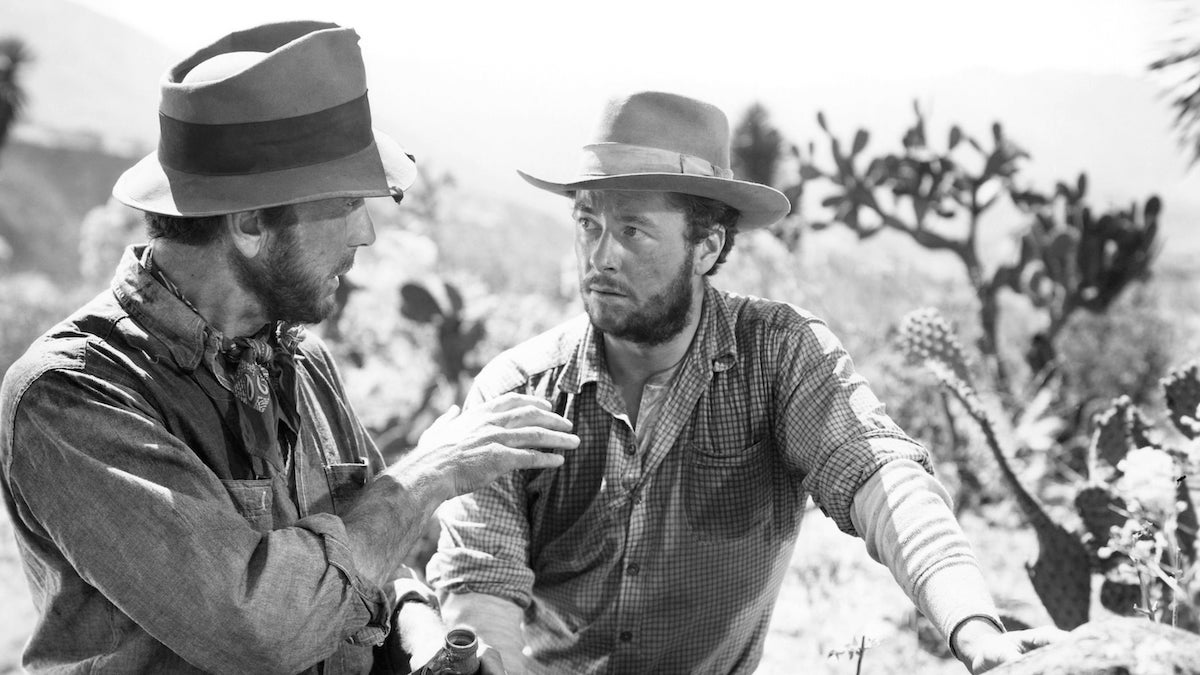
His satisfaction, he believes, will come from power over others; not only from winning but from making them lose. And so even if Dobbs isn’t quite a villain (he’s instead portrayed as being helpless to resist his own low impulses), he embodies the most clearly expressed lesson of The Treasure of the Sierra Madre: greed is very definitely not good.
The film, which follows the broad outlines of the novel while omitting its extensive secondary stories and not dwelling on his social and political points, is set in Mexico in 1925, around the time that John Huston himself had lived there. Traven, too, was probably in Mexico by that time, although almost nothing is known of the reclusive author’s life and identity. (The “secretary” he sent to advise on production may in fact have been Traven himself, incognito.)
It begins in the coastal city of Tampico, where the first character we meet is Dobbs (Bogart at his grimiest), down on his luck, angry at losing the lottery, picking up discarded cigarettes, begging for money from more affluent Americans (one of them played by John Huston himself). He and his pal Curtin get construction jobs working for an oilman (Barton MacLane), but he cheats them out of their pay; so they get their revenge in the form of a barroom fight that is vicious and undignified by the standards of 1940s Hollywood (as much of the violence in Sierra Madre is) but, nevertheless, they end up in a flophouse.
There they meet up with the much older Howard, an experienced prospector and a voluble philosopher; his two-and-a-half-minute speech on gold, “a devilish sort of thing”, is one of the most famous passages in the movie. “I know what gold does to men’s souls,” he says.
Deciding they can benefit from his expertise, Dobbs and Curtin draw him into their plan to prospect for gold in the mountains of the Sierra Madre, and off they all set, Dobbs giving an early indication of his character during the train journey: while Howard explains to Curtin exactly what they’ll need to do, Dobbs just dozes. He wants the gold and the opportunities it’ll bring to make him feel superior to others, but he doesn’t want to make much effort for it. Before long, faced with hard work on the mountainside, he will admit “I thought all you had to do was find it.”
It’s no surprise, then, that he’s soon dispirited and starts arguing with Curtin, as he also does with another American who turns up called Cody. Meanwhile, the group of bandits led by Gold Hat are harassing the prospectors, but—as Howard had predicted in his speech—it’s threats from inside the group of Americans, rather than external ones, that eventually bring them down.
John Huston was a director and writer of broad interests; there is no narrow set of “Huston themes” any more than there is an instantly identifiable “Huston style”. But Sierra Madre highlights many of his preoccupations. It is above all a humanist film; the selfish, overweeningly ambitious Dobbs is probably not evil but he is a victim of, and consumed by, his own arrogance and selfishness; Howard and Curtin, by contrast, come out better in the end because they ultimately value people more than wealth. Perhaps no scene illustrates this better than a minor one where Dobbs fails to grasp why two men would exchange tobacco as a sign of friendship: “Why doesn’t everybody smoke his own?” he asks.
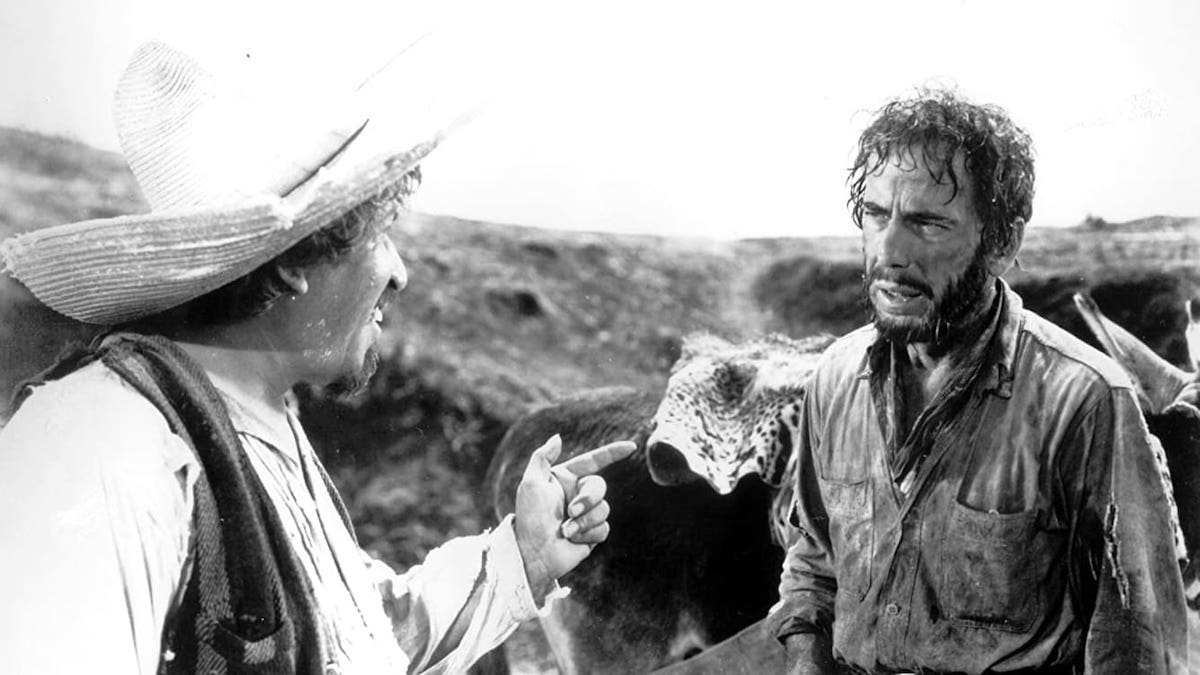
It’s also a movie about a quest, a favoured motif for Huston—with its all-male search for treasure in foreign mountains it resembles his much later The Man Who Would Be King (1975) most of all, although there are also interesting parallels with others, such as The Maltese Falcon (1941) and Moby Dick (1956). In all four films, the protagonists’ obsessions are shown with heavy irony to be futile. The revelation the Falcon is fake, the maritime disaster at the end of Moby Dick, the shot of the gold tumbling down the hillside at the end of The Man Who Would Be King, and the moment in Sierra Madre where Howard and Curtin discover their bags of gold are empty, have much in common. Somewhat surprisingly for the period, meanwhile, Sierra Madre also nods to environmental concerns in Howard’s suggestion that the trio clean up the area where they have been prospecting.
In style, too, the absence of obvious directorial mannerisms is typical of Huston. He said the camera was “impersonal, it just looks on and lets [the actors] stew in their own juice”, and indeed, at first glance, the direction of Sierra Madre seems completely artless. The death of one key character, for example, is shot so casually one could almost miss it (although appeasing the censors may have been a factor here). Framing is always effective but hardly ever obvious—a shot of a bandit seen through prison bars is a rare example, and the moment that a bandit appears reflected in the water of a pool from which Dobbs is drinking is perhaps the most famed one, but these are exceptions.
But in reality, Huston and his cinematographer Ted McCord work hard to give the film an atmosphere that remains slightly unsettling throughout; there may be scenes of repose around the campfire but Sierra Madre doesn’t let the audience relax, and the average shot length is brief for the period (7.7 seconds, according to Cinemetrics, compared with 11.5 seconds for the more stagey Maltese Falcon).
It’s often a gloomy film, literally—as Lesley Brill (author of John Huston’s Filmmaking) observed, it looks like “a wilderness film noir” and makes frequent use of very close shots. It gains much, too, from its use of Mexican locations—a mix of city, wilderness, small towns, and village settings. Sierra Madre was one of the first Hollywood movies substantially made in that country, and the dark, busy, people-packed frames in earlier passages give it an intense sense of place, just as the abundance of factual detail about prospecting grounds the film further in reality. One can taste the dust of Tampico, but later on, you can also taste the trio’s isolation and vulnerability out in the Sierra Madre, heightened by extensive unsubtitled Spanish dialogue (Howard is the only one of the three Americans who can speak the language) and the bandits’ crazy laughter.
A great deal is added, too, by the score from Max Steiner. The composer at his least inspired can tend to the trivial, for example in his use of leitmotifs associated with individual characters and his fondness for music that precisely reflects the on-screen action, but for Sierra Madre he delivered one of his best scores, its most powerful appearances built around a simple seven-note idea (CCBCEDC) that is first heard shortly after Dobbs, Curtin, and Howard leave Tampico.
Steiner uses it throughout the film: fast or slow, grand or joyful, ominous in a minor key. It’s slightly nostalgic as the three men prepare to leave the mountain toward the movie’s conclusion, it seems to echo their footsteps as they trudge uphill earlier on. It is dramatic and threatening during a bandit attack, it’s exhausted and plodding near the end of the film; when a development of the theme jumps up to a note a fifth higher, a much larger interval than it has involved before, it beautifully captures the trio’s high hopes for the expedition.
And if Sierra Madre has one of Steiner’s best scores it also, undeniably, gains even more from one of Bogart’s greatest performances (some would say his very best). The beaten-down, dishevelled Dobbs of the opening Tampico scenes is as far from the smooth, assured Sam Spade of Maltese Falcon as you could imagine and, of all Bogart’s characters, he’s closest to Queeg from The Caine Mutiny (1954).
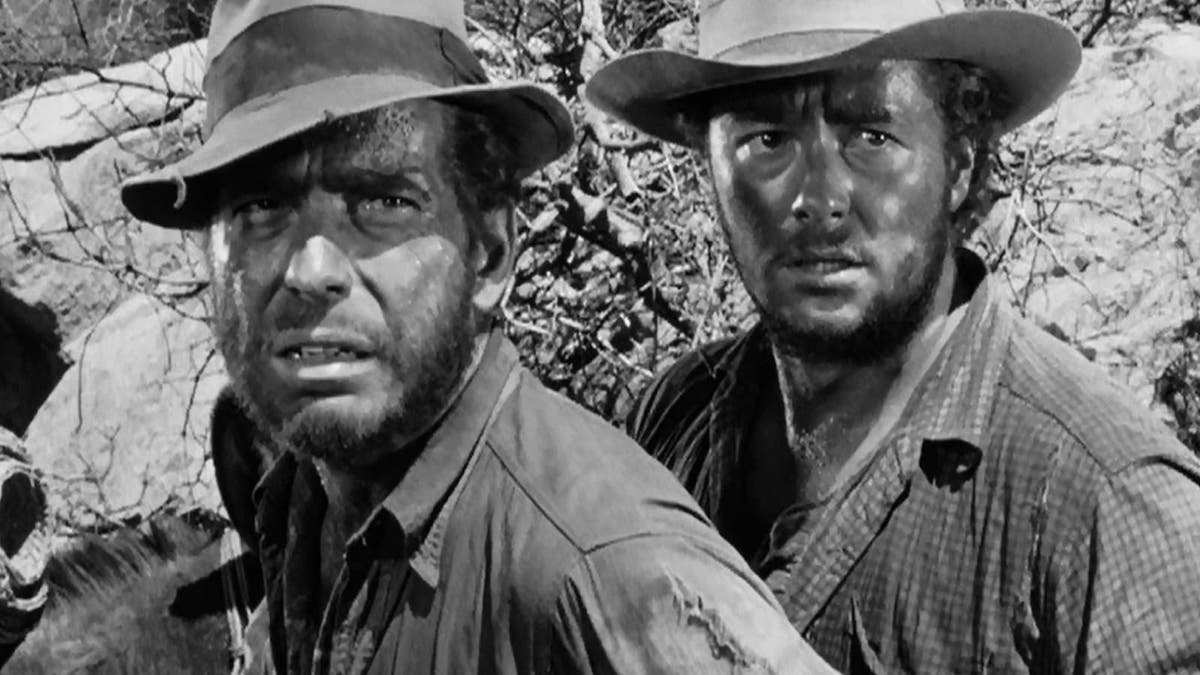
His arguments with Cody over the latter’s use of water to make coffee, and his snarl at Curtin that “you’re not putting anything over on me”, exemplifies the same paranoid distrust that would bring Queeg down, and in Sierra Madre Bogart never once lets us lose sight of Dobbs’s fundamental avaricious flaws. Early on, he may not seem so bad on the surface—he’s willing to work hard for success, or so he says—but his dreamy, rapturous expression when he speaks of gold tells another story.
Equally memorable (and recognised by the Academy while Bogart was overlooked) is Walter Huston, the filmmaker’s father, as the much older Howard. He might seem wise and avuncular compared with the unstable Dobbs, but there is a manic edge to him too, emphasised by his rapid-fire conversation.
Compared to these two, Holt as Curtin could have made little impression—-he’s the Average Joe of the trio, the Everyman with whom the audience can identify—but Holt gives him the easy likeability that the part requires without making him appear weak. His own father, the western star Jack Holt (nearing the end of his prolific career), also appears in a tiny uncredited role as one of the flophouse residents.
Although it was not an instant box office success, The Treasure of the Sierra Madre was acclaimed by critics. James Age called it “an exploration of character revealed in vivid action”, argued that “Huston, next only to Chaplin, is the most talented man working in American pictures”, and it earned three Academy Awards for the Huston family, with John named ‘Best Director’ and ‘Best Screenwriter’ while his father won ‘Best Supporting Actor’.
It has continued to influence other films and TV through the decades, from Sam Peckinpah’s The Wild Bunch (1969) to Paul Thomas Anderson’s There Will Be Blood (2007), as well as TV’s Breaking Bad (2008-2013). The scene with the empty gold bags is frequently alluded to in other movies, and one of Gold Hat’s lines is among the most quoted of all Hollywood quotes, though it’s usually given slightly wrong; he actually says “we don’t need badges, I don’t have to show you any stinking badges”, not “we don’t need no stinking badges”.
If one had to find a minor fault with the movie, it’s that it might seem slightly unsubtle by today’s standards; Howard’s monologue on gold and Dobbs’s increasingly unhinged performance, for example, spell out very explicitly and repeatedly what Huston wants to say. But this was standard for the time, of course, and it really does nothing to detract from the film’s power.
A strong and almost mythic story… a thoroughly convincing sense of place and reality… terrific performances…near-perfect pacing… The Treasure of the Sierra Madre has it all. Asked to submit my 100 greatest English-language movies of all time for an online poll, I named it number 16.
USA | 1948 | 126 MINUTES | 1.37:1 | BLACK & WHITE | ENGLISH • SPANISH

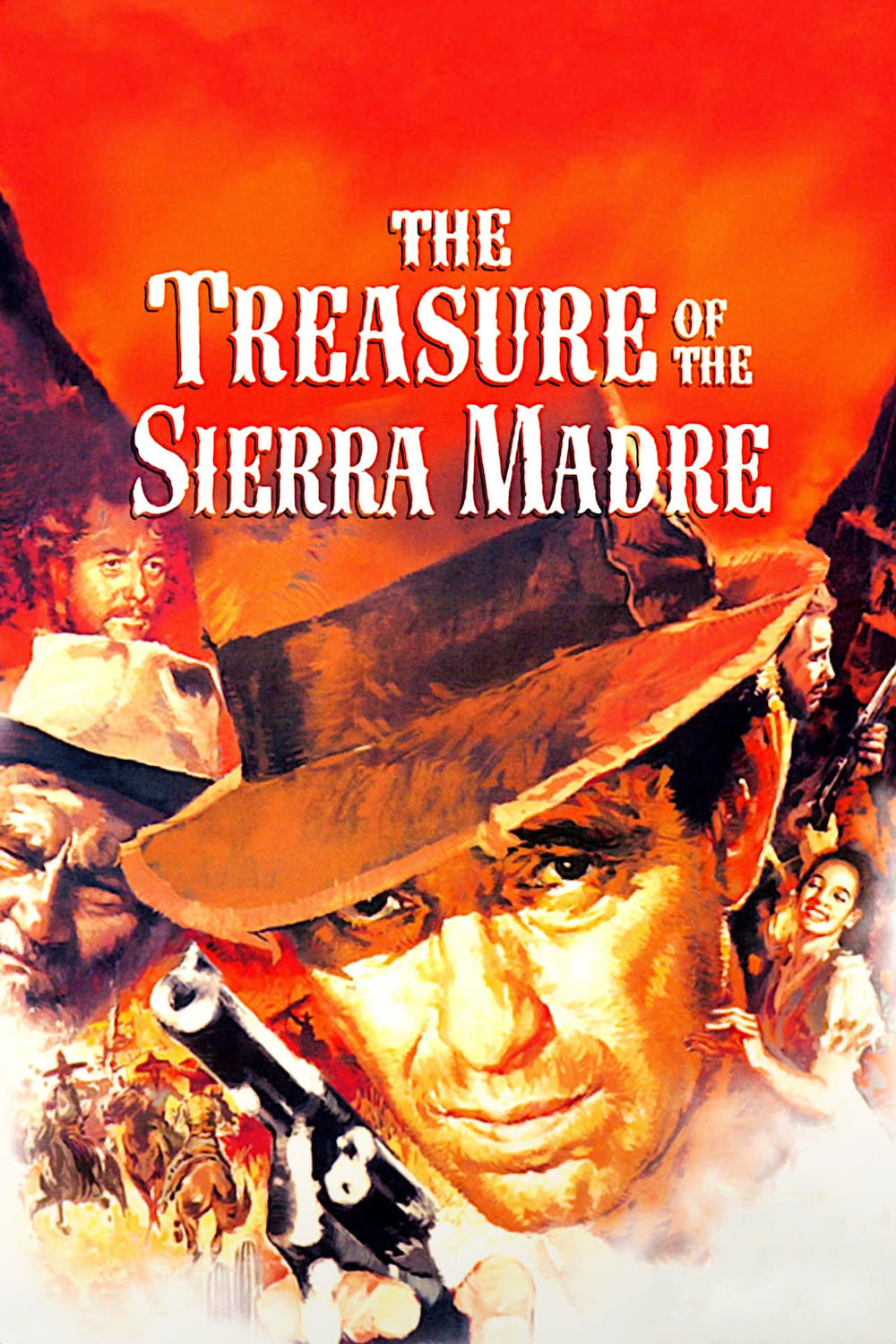
director: John Huston.
writer: John Huston (based on the novel by B. Traven).
starring: Humphrey Bogart, Walter Huston, Bruce Bennett & Tim Holt.
